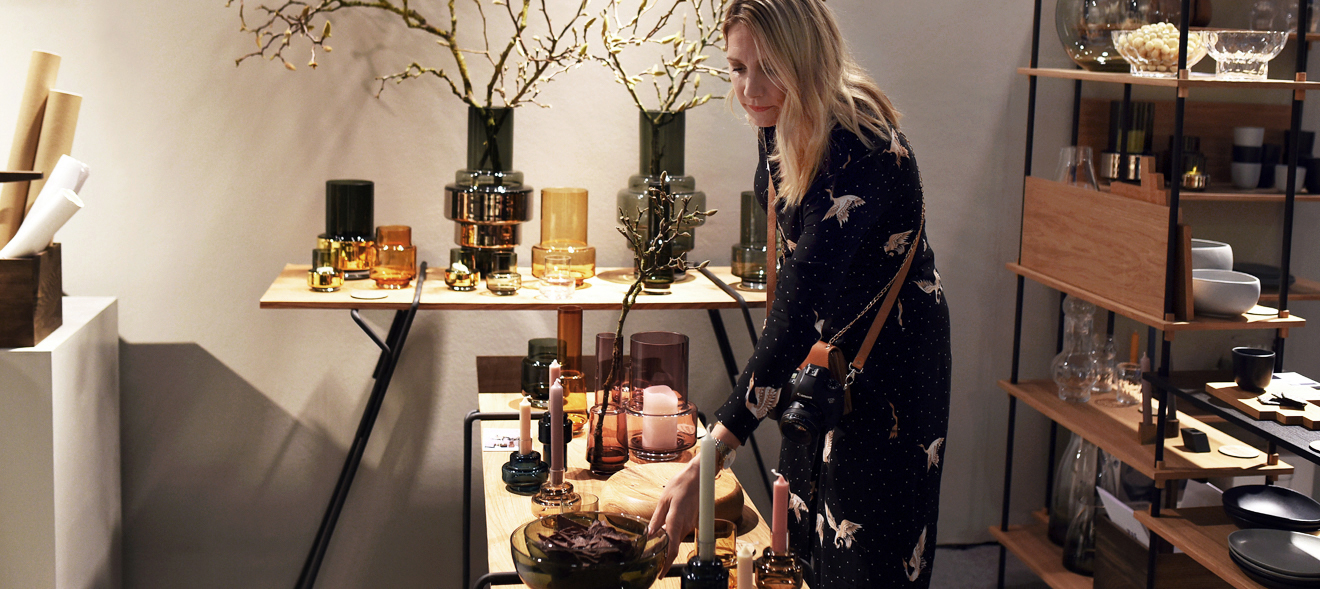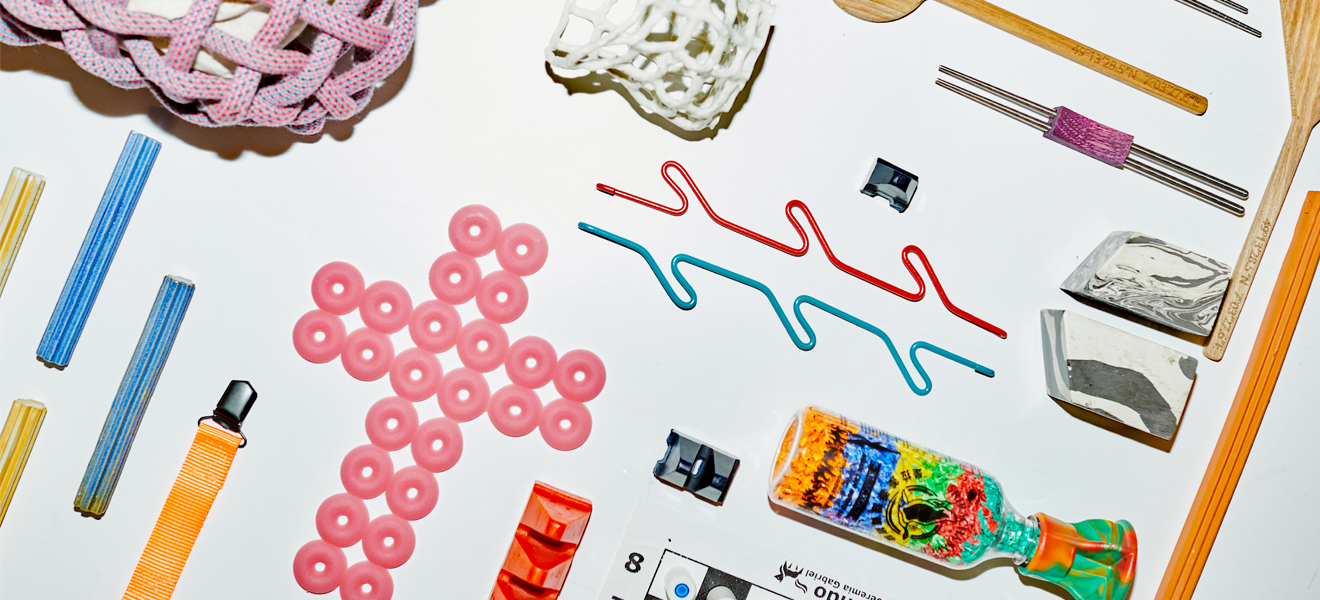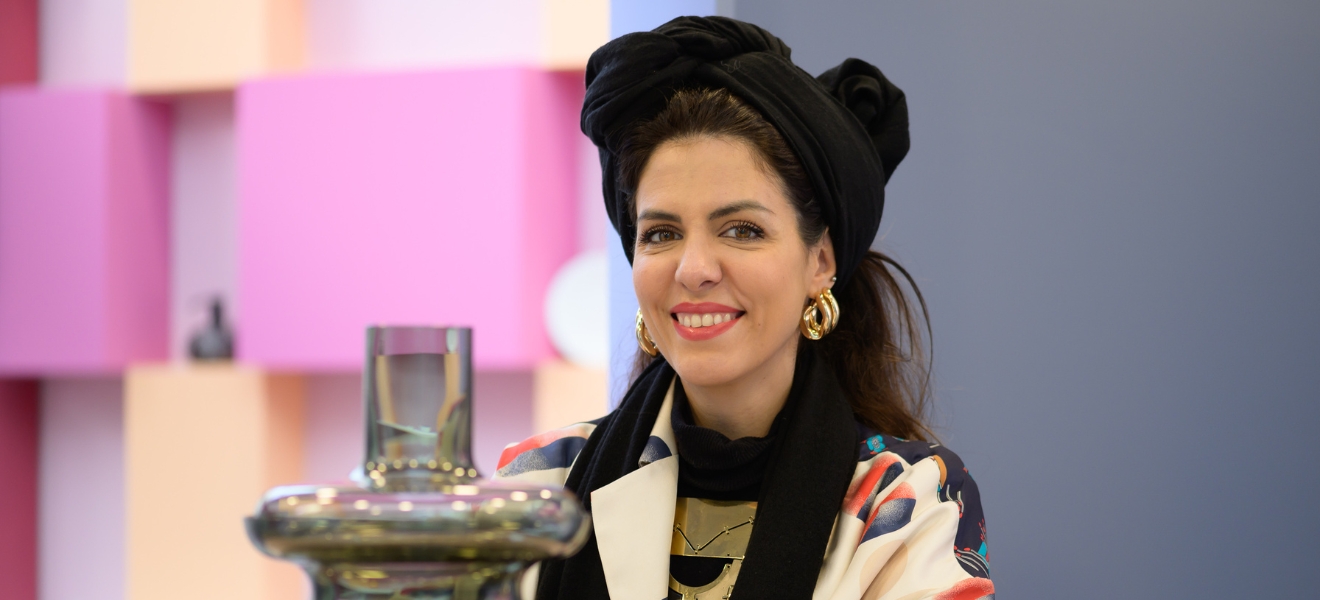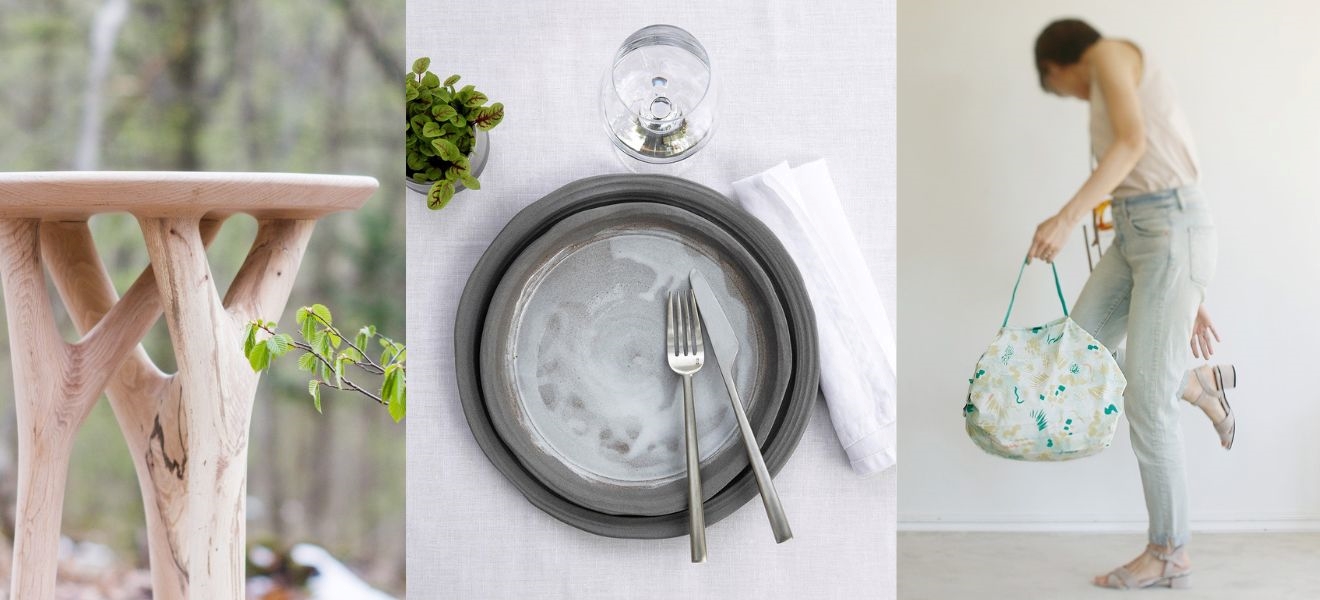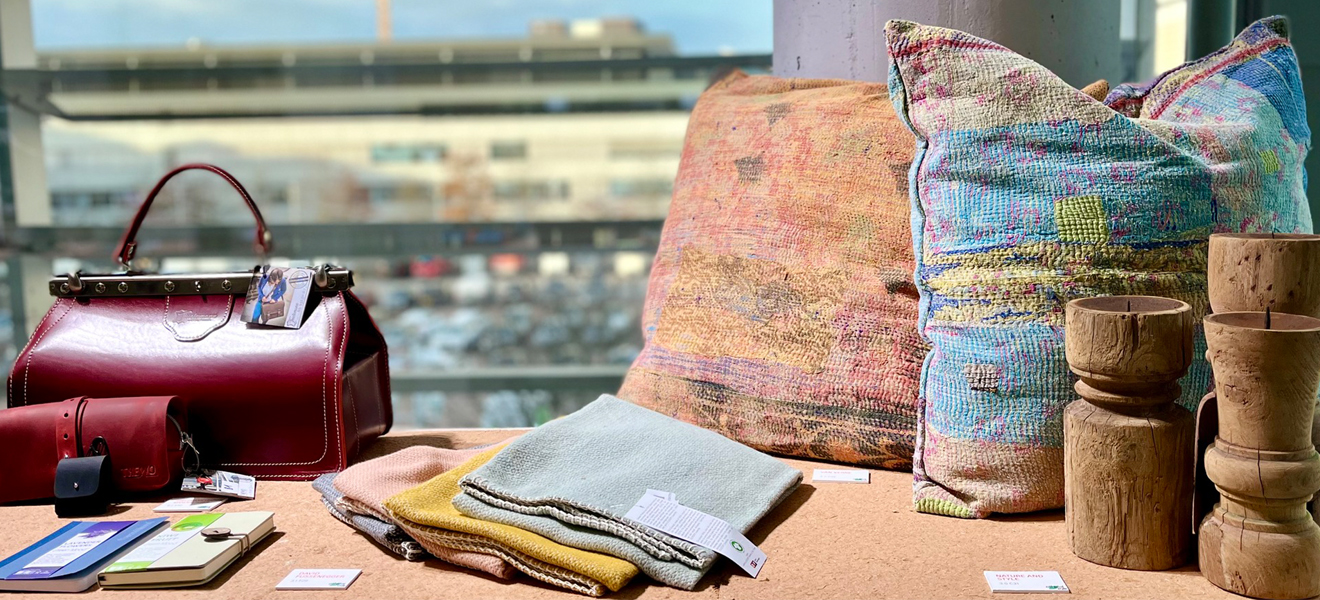Handmade homeware is on the rise in 2020 and it’s a welcome celebration of age-old techniques, imperfection and unique pieces that tell a story. Think hand-knitted throws, mouth-blown glass and hand-painted porcelain that took days, weeks or even months to create and can be revered for years to come.
Hello! I’m Niki Brantmark, a British interior design blogger based in Malmö, Sweden; I am a journalist, speaker, author of three books and the creator of My Scandinavian Home. This year marked my second visit to Ambiente, the leading international consumer goods trade fair. Having discovered the sheer size and uniquely diverse offering of Ambiente in 2019, I decided to extend my visit this year in order to give myself time to explore all the halls, see what’s trending, network with industry professionals, discover the latest news and chat to designers first hand.
Naturally curious and drawn to Scandinavian design in particular, I love to seek out beautiful crafted items and the latest trends. And one of the most exciting discoveries I made at Ambiente 2020 was the rise of handmade homeware. In a fast-paced digital world, 3D printing and rapid technological advancement, mass production has never been easier. But I was happy to see many designers bucking the trend and returning to good old-fashioned handcraft techniques to create unique, individual pieces in materials such as glass, clay, wood and wool.
So why is handmade homeware on the rise in 2020? I believe this is a response to the increasingly conscious consumer, who is rapidly becoming much more aware and knowledgeable about where the items they’re buying are coming from. Who made them, the ethics of the companies supplying the goods, as well as the source and sustainability of the materials.
Furthermore, there’s a growing backlash against mass production, identikit pieces, and people are seeking to fill their home with individual pieces with all the hallmarks of handcraft – including imperfections in the colour, shape, and texture. Combine this with modern “boxy” architecture, and there’s a general need to add softness to the home. These imperfections bring texture, warmth and connection with them, all of which add to the home in a meaningful way.
Let’s dive into some of my favourite handmade homeware techniques and pieces I spotted at Ambiente 2020:

Handmade heritage
For some companies, handmade homeware items are a hallmark of the brand and a proud heritage that has survived hundreds of years. Portugal-based Vista Alegre, for example, has been producing fine porcelain since 1824, with some of the decorative dinnerware pieces entirely hand painted. Robbe & Berking proudly exhibited their barbecue collection – featuring extra-sharp steak tools, which are handmade in Germany. And I also admired classic, decorative porcelain dinnerware by Rudolf Kämpf who has been making handmade pieces since 1907.


Designers choosing handmade techniques over technology
The rise of social media has also meant that independent designers and small businesses have access to consumers in unprecedented ways – meaning a greater connection between the artist and the buyer and a much broader audience for individual handmade homeware pieces than ever before. It’s almost as if we have come full circle – back to the days when people would buy straight from the local carpenter, artist, joiner and ceramicist. And it’s given designers the confidence to branch out on their own.
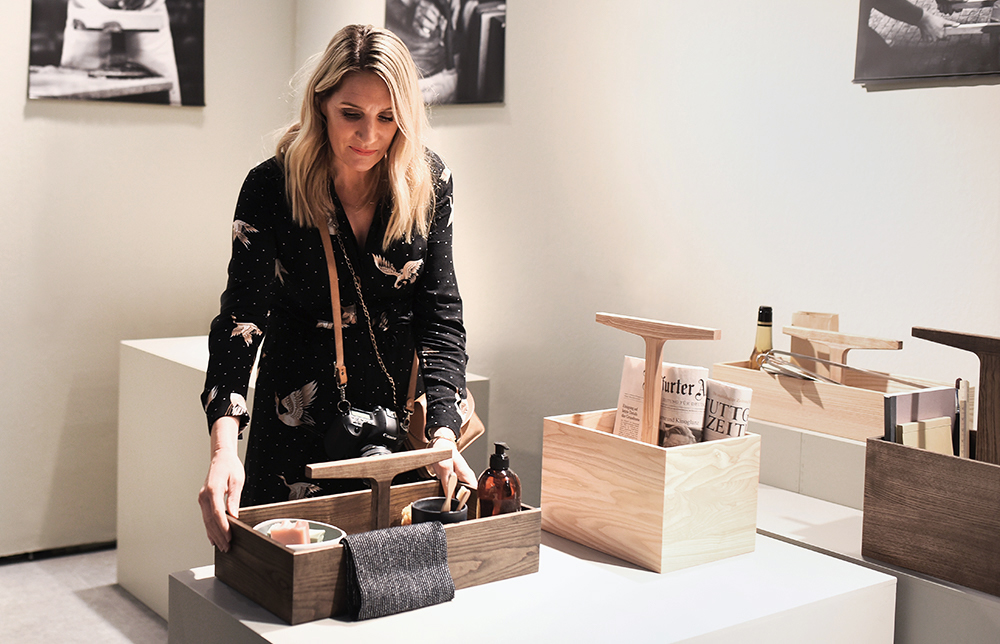
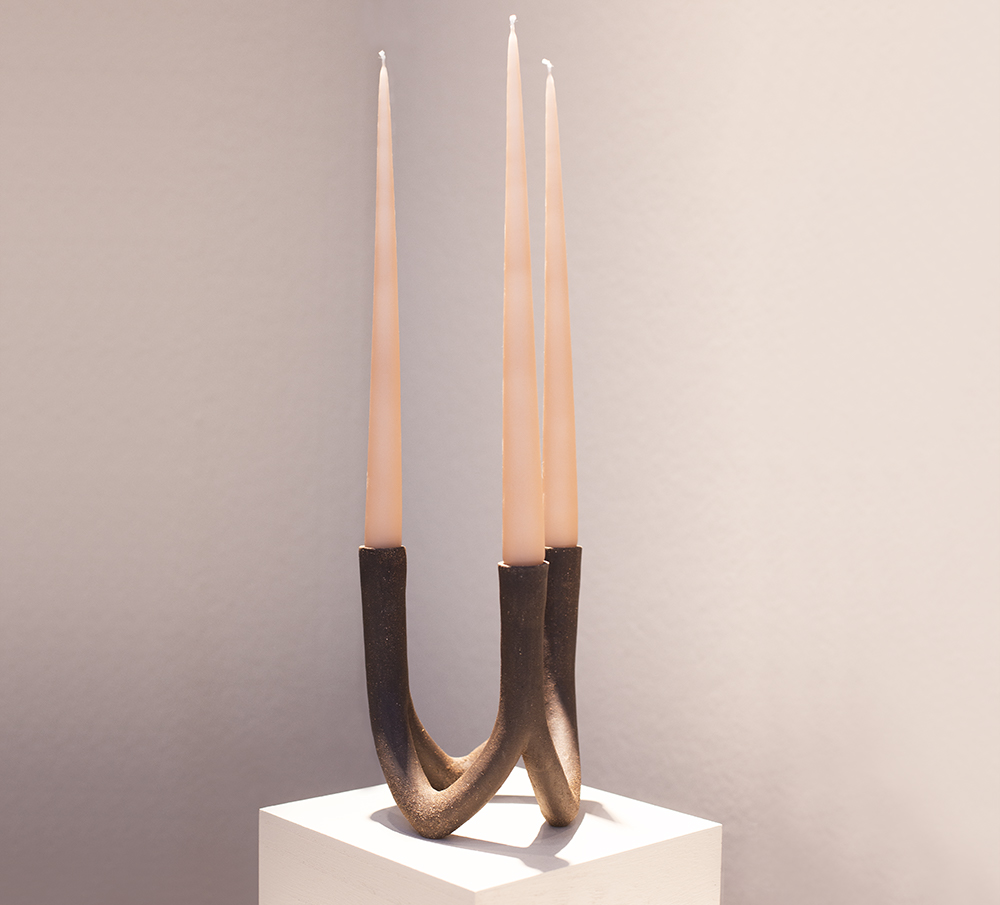
Handmade homeware: clay candleholders
Scandinavians have a long tradition of producing items by hand. Their access to large expanses of nature and natural materials – and traditionally, the sparse, spread-out population, has meant that they have always been self-sustaining and deft at creating items for their own home by hand.
Danish brand Ro Collection describes itself as “a company deeply rooted in the love of craftsmanship, quality and beauty”. They exhibited a series of well-crafted, long-lasting products made from raw materials including wood, glass and ceramics. “A handmade and low technology-based production brings with it variation in all shapes and colours, and thereby a strong sense of authenticity to all our products,” a Ro Collection spokesperson told me.
Handmade Decorative Pots and Tableware
2020 will see handmade ceramics take the interior world by storm. Whether clean and simple, heavily textured, colourful or quirky, Ambiente paid testimony to a return to the rise in the demand for handcrafted ceramics in the home!
For South Korea-born, London-based contemporary ceramicist Hojung Kim, it was the combination of using traditional craft techniques and industrial methods which make her ceramics unique. Like a work of art, Hojung was looking to capture cultural diversity through the touch of her hand, colour and clay.
Berlin-based independent designer Anna Badur displayed her beautiful Pool and Aqua series which plays on the idea of flowing water on porcelain tableware. To create the pieces, Badur dips porcelain plates, platters, cups and vases into different colours. The individual nature of Anna’s handmade homeware pieces ensures the design and pattern is unique to each item and no two pieces look the same – just like nature itself!


Woodwork and carpentry
There is something about running your hand across beautifully crafted wooden pieces that is a real joy to the senses. Could it be the connection with nature? Or perhaps an appreciation of the hard work that’s gone into each and every item: the sawing, chiselling and sanding. And then there’s the unique patina of every item, handmade by nature!
Ambiente 2020 revealed a rise in beautifully crafted wooden pieces, from handmade chopping boards by Germany-based Laura Living to wooden butter knives and a pestle and mortar by Deria Devi in Istanbul.
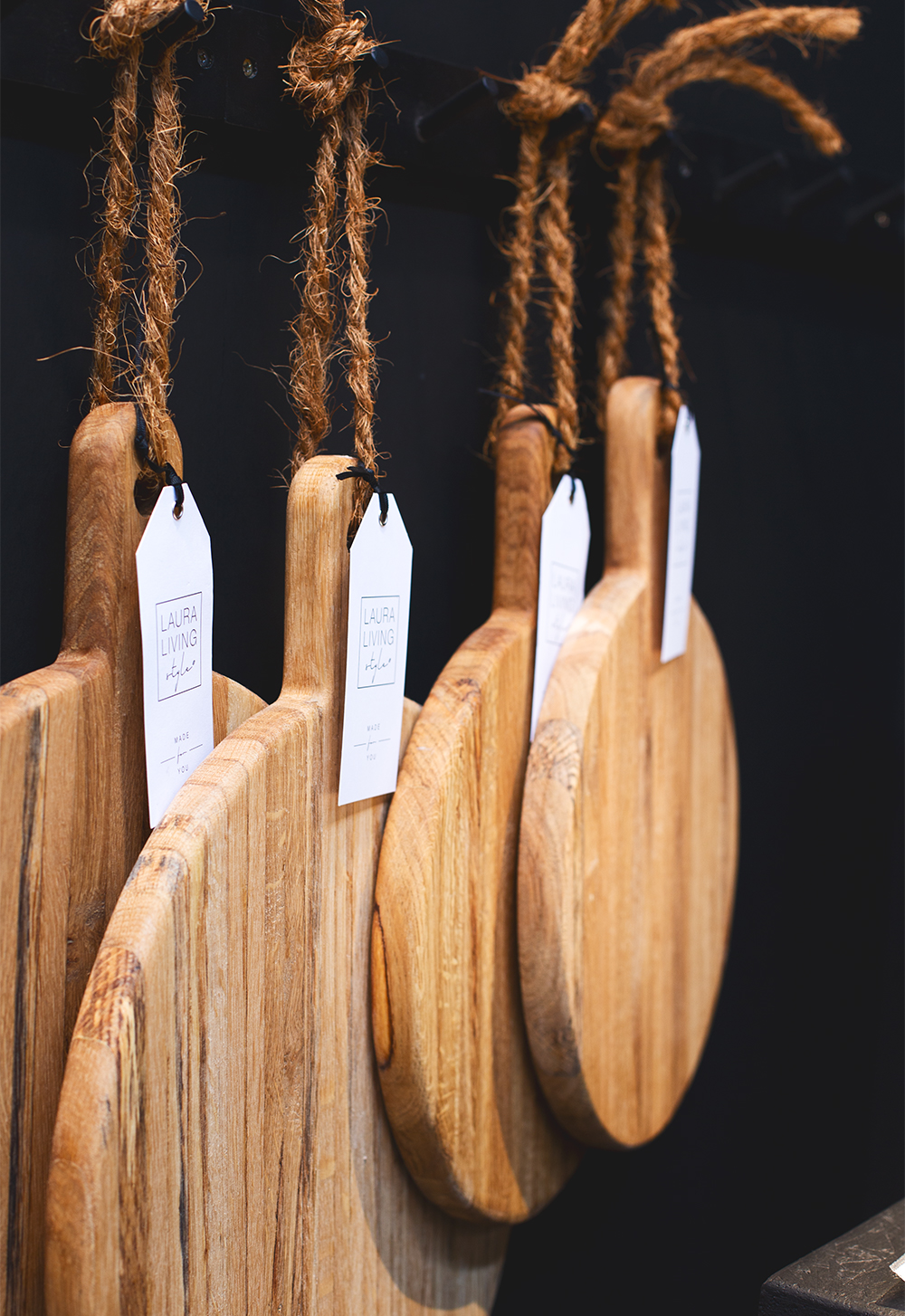
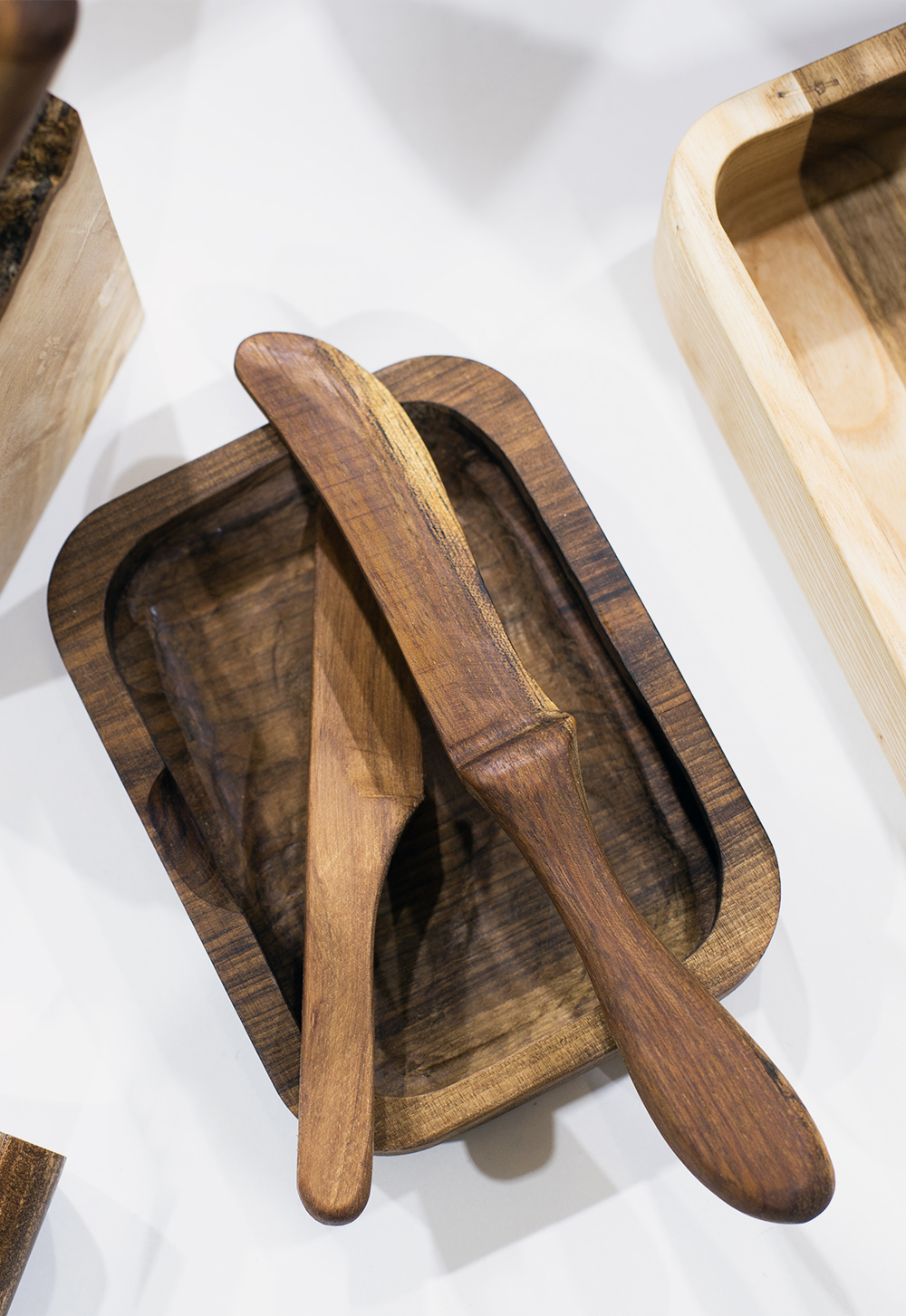
Handmade Textiles
One of the things I love most about being at Ambiente is that it gives you access to designers and small businesses whom you would never usually have the opportunity to meet. It’s an opportunity to hear the story behind the products and the thought process that goes into each and every piece.
Hand-knitted
Denmark-based Care By Me stood out for their “handmade & heart made” philosophy. Their series of throws, scarves, jumpers and socks have been hand-knitted in Nepal by women who are educated in craftsmanship. The company is careful to educate the consumer about the length of time it takes to produce each item, highlighting that a single cashmere-wool mix throw takes 22-25 days to knit – making it something one would want to keep for ever.

Hand-sewn
As a child. I have vivid memories of my mother working away on her sewing machine while I played on the floor beside her. She’d be busy making smock dresses, following patterns for a jumpsuit or making a shirt by hand. It’s something that’s fallen by the wayside these days due to a combination of fast fashion and being time poor.
But I was happy to see a sewing revival at Ambiente 2020. From traditional hand-sewn wallets with a modern twist by Dutch brand c-secure to vibrant paper vases with a hand-sewn trim by Barcelona-based Octaevo.
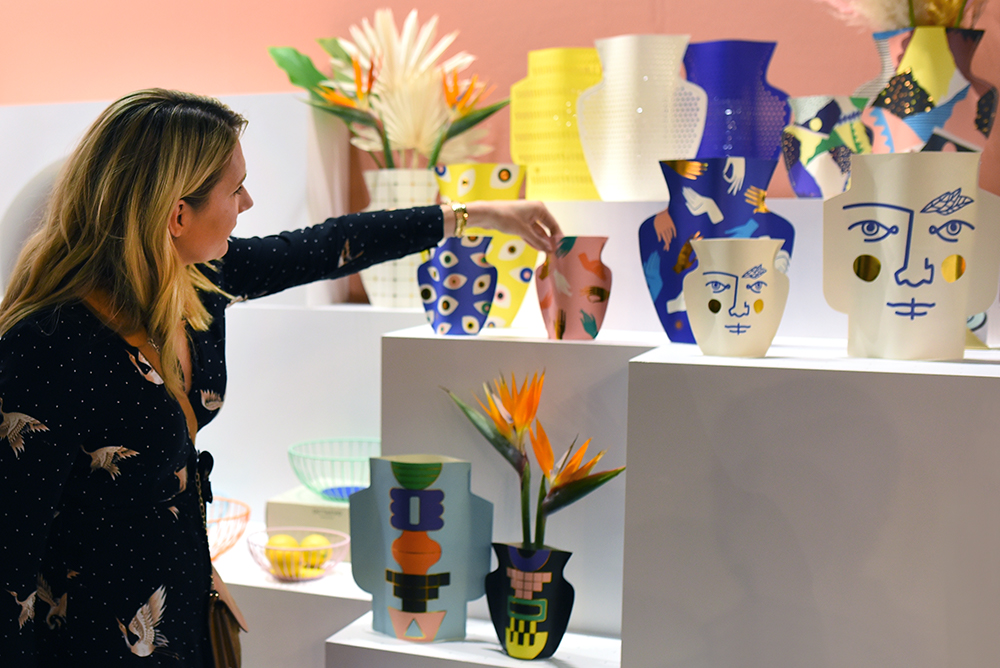
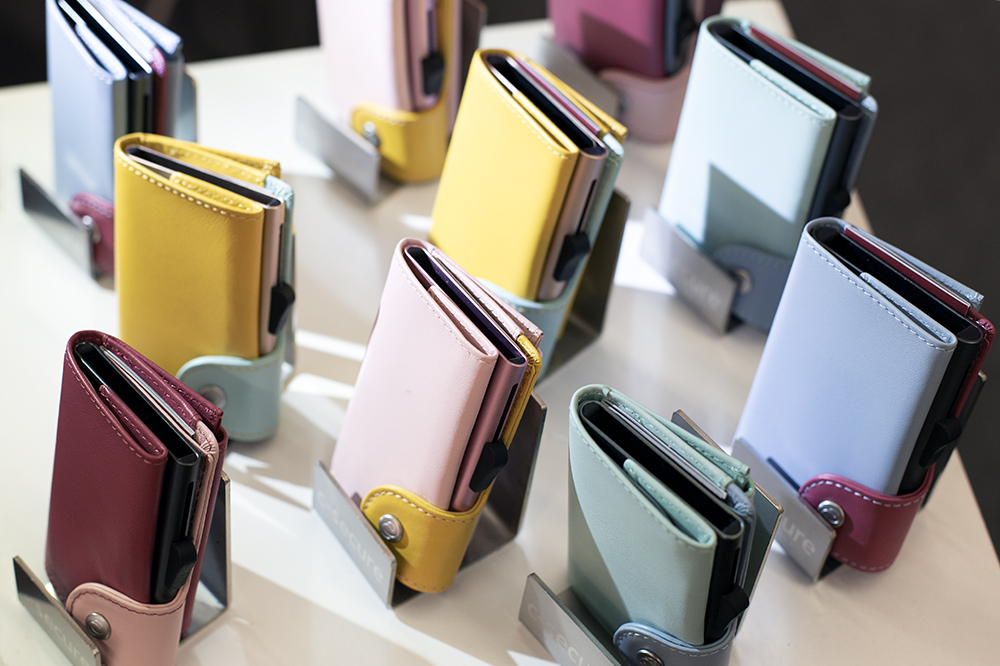
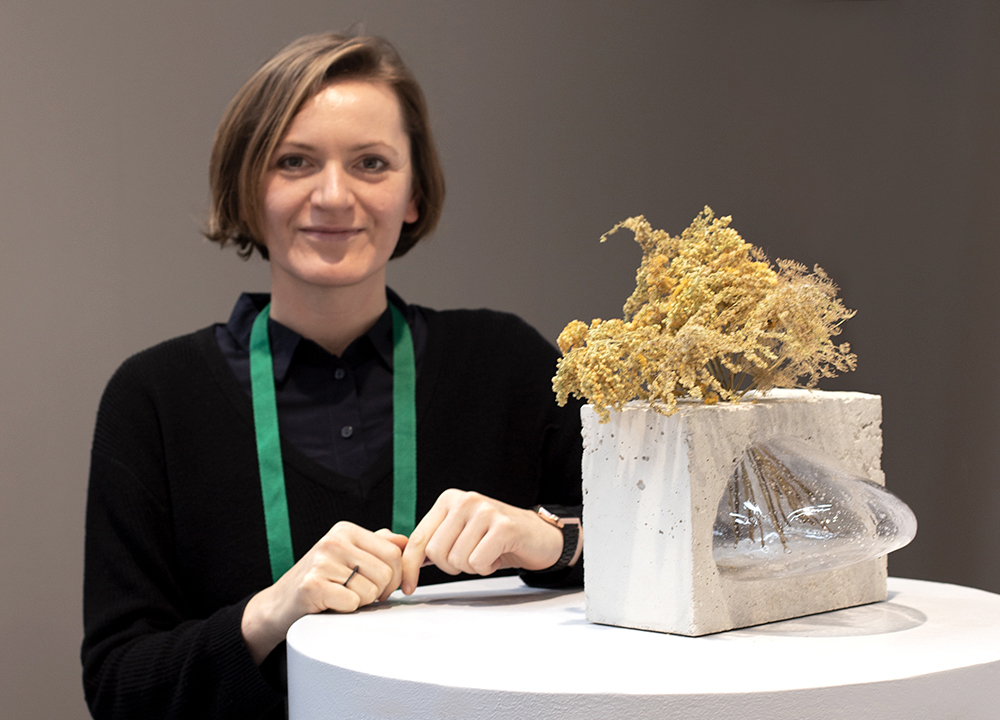
Handmade items Using Mixed Media
It was encouraging to see so many designers striving to take a more sustainable approach to design at the fair this year. Using recycled materials can mean a less pure form – which lends itself to the trend of appreciating imperfections – and the rise in popularity of handmade homeware.
Young brand Prasklo (meaning “crack”) specialises in creating decor objects from recycled glass and clear concrete. Every piece is handmade, with the concrete form individually shaped. The objects celebrate the raw charm of genuine materials and human touch – and a wonderful and striking contrast with machine perfection.
Mouth blown and painted glass
Recently there has been a wonderful resurgence in the popularity of handmade colourful glass items – and it’s all about mixing and matching different hues to create a vibrant vignette.
This was demonstrated by Japanese company Aderia, and their delicate handprinted glass sake bowls, showcased in an array of colours, glass thicknesses and imperfect forms, all of which help to bring an arts-and-crafts aspect to the tableware.
I was also excited to see sculpted glass including vases and even a fabulous sink by Wave Murano Glass – eye-catching art for the bathroom!

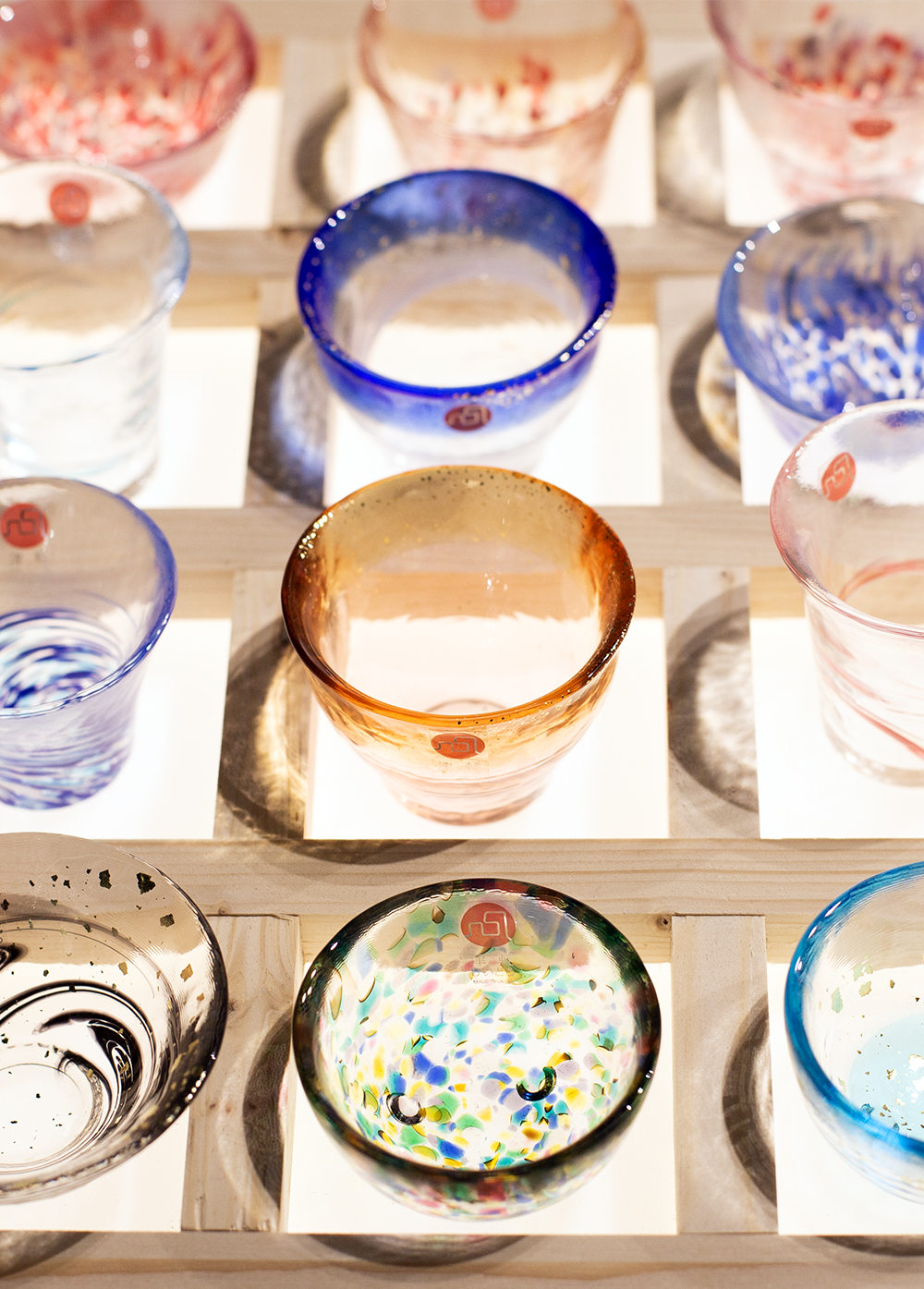
Overall, I was super-excited to see the celebration of handmade homeware items at Ambiente this year. The vast array of exhibitors showed that there are handcrafted items for every home – whether you prefer muted, earthy colours and simple forms, or bold and beautiful objects that make a statement.
It was also encouraging to recognise the important sustainable message that came with them: by going back to basics and painstakingly creating an object by hand, it can take days, weeks or even months to produce one single object. Because of this, the object becomes a masterpiece and something to be revered, protected and maintained until it is passed onto the next owner. Furthermore, when one invests in pieces such as these, the home becomes that bit more special, and can add a touch of magic to your everyday, even if for a fleeting moment. And in doing so, the craftsman’s time has become worthwhile.
Thank you for a truly inspiring time at Ambiente!
Niki Brantmark
See more of Niki’s Ambiente favorites: My Scandinavian Home
